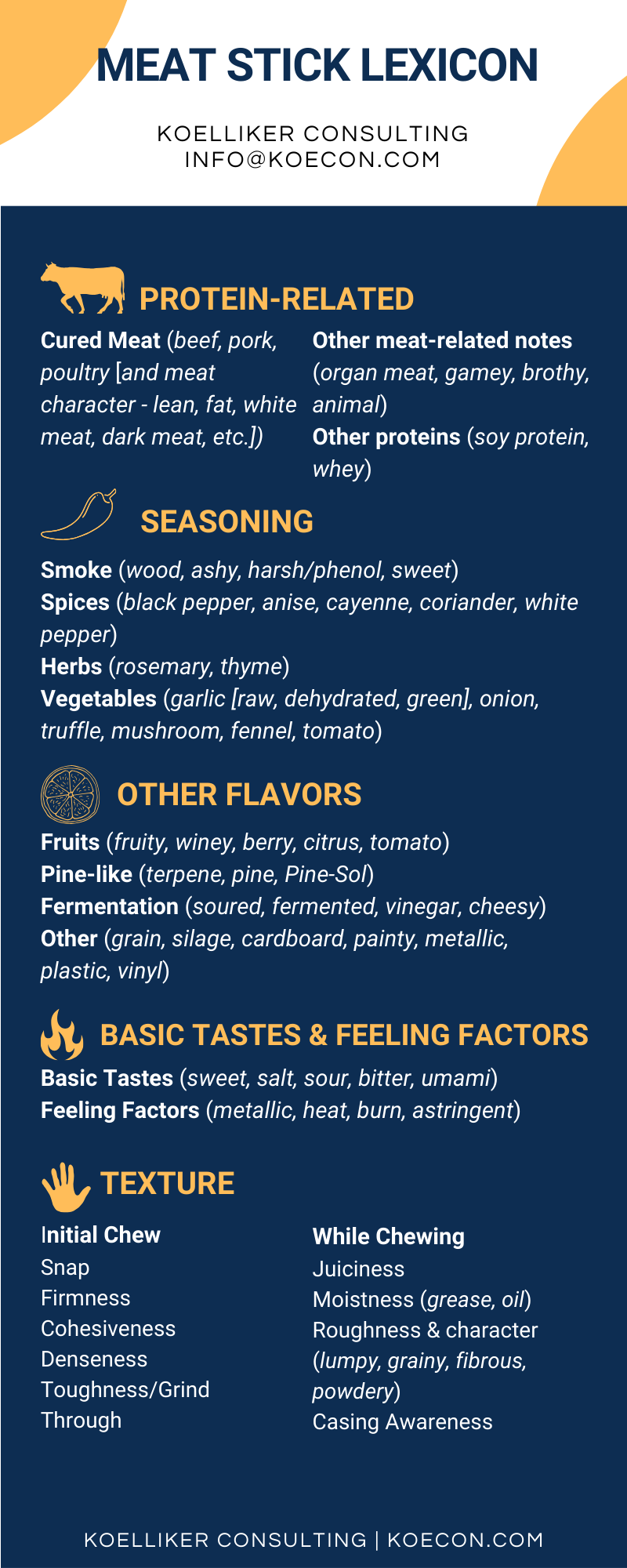Meat stick lexicon
One of the most common uses of a product review (with or without qualitative mapping) is to create a lexicon for a product category. I’m posting the lexicon I created after I reviewed the meat sticks for the Meat Stick Mapping here, feel free to use it as a base for your own evaluations of meat sticks, jerky, even other cured meats like hot dogs, lunch meat, etc.
A sensory lexicon to describe the flavor and texture of meat sticks.
Other common uses of qualitative mapping:
Reviewing a large category to select the most differentiated or representative samples for further testing. This is especially helpful for selecting samples for qualitative or quantitative consumer testing where sample slots may be limited and you want to get the biggest bang for your buck with the samples you do test.
These maps can help select samples to minimize sensory redundancy, to ensure the broadest range of sensory character is tested.
Maps can also identify alternate samples to test, if specific products are not available or other factors dictate some of the samples in the research (e.g. brand, market share, etc.).
2. Reviewing your own product’s variability (samples reviewed in the qualitative mapping may be only your own products, produced at different plants, shifts, co-mans, etc.). This can help you understand the space of production of your own product and how variable production is.
3. Understanding white space opportunities for a category you don’t play in or have only one of a few products in. The maps can highlight areas of the sensory space where no products exist or only competitive samples exist – these areas may be optimal for new product development, creating your own offerings that are unique to your portfolio.

